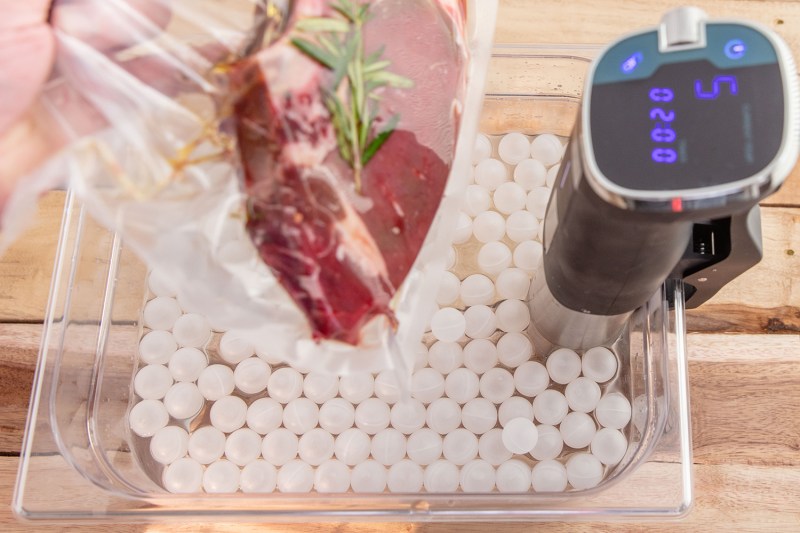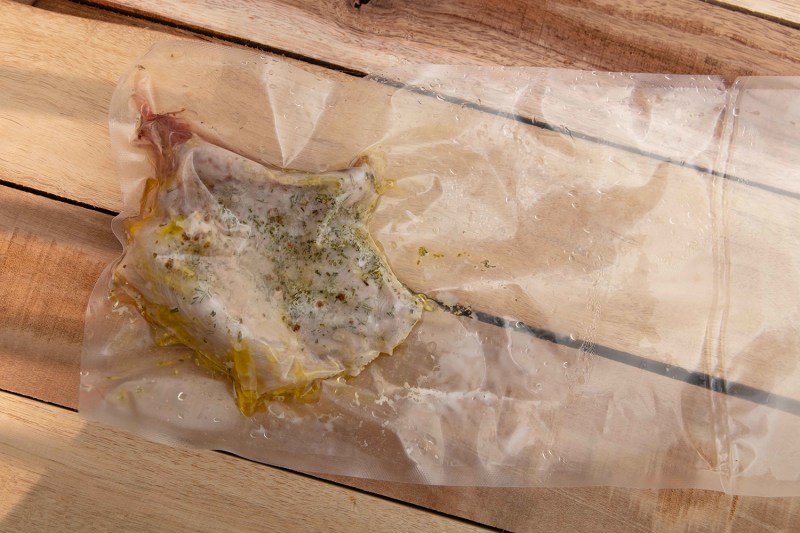If you’ve ever dined at a fancy French restaurant and wondered how the chefs there cooked a slab of meat to tender perfection, they’re probably using the sous vide method. Sous vide translates to “under vacuum” and involves cooking foods using a pot of water and a vacuum-sealed bag. It is a trendy culinary technique, for sure.
But did you know that it originates from an old-school method? We’re not going to spoil everything because Tyson Ho, the owner of Arrogant Swine in New York City, will talk about everything you need to about sous vide cooking. Then, head on to our roundup of the best sous vide machines if want to hone your sous vide cooking skills.
The Manual: It’s strange to think boiling a steak would lead to a perfect result — can you explain some of the science behind the sous vide method?
Tyson Ho: Sous vide demystifies most of meat cookery. The craft of the cook is the subjugation of fire to maintain a temperature. This is very hard to do, fire is an ancient and violently unstable god. Sous vide eliminates the need to master cookery because a set temperature is at your fingertips.
Sous vide allows for meat to hit a desired temperature and go no further, defanging the threat of overcooking. It does this by slowly raising the internal temperature of the meat in a stable and controlled environment i.e., the water bath. Its creation is no less pivotal than the lever and pulley were for the caveman.

TM: How long has this cooking method been around?
TH: Sous vide is a fairly recent cooking method that, in my opinion, evolved from the classic French technique: En vessie. En Vessie was a technique of slow cooking popularized by the father of modern French cuisine, Fernand Point (1897-1955). When a dish is cooked en vessie, the animal is placed inside a pig’s bladder and seasoned with aromatics like truffles and boosted with aromatic liquors like sherry, cognac, or Madeira.
The bladder is tied and set over simmering waters, where it would balloon up slowly, cooking chicken or poultry in its natural juices. The underlying theory became mainstream. Gentle cooking of meat resulted in a product that was more tender and juicy.

TM: Do you get the sense many restaurants and/or chefs are using sous vide?
TH: Sous vide is largely relegated to high-end restaurants and most chefs avoid it because of the extra administrative requirements to legally use sous vide. The technique is not one that our modern health departments understand and so many unnecessary fines have scared off chefs.
TM: Is there anything we can’t cook via sous vide?
TH: Barbecue. Like Flat Earth theorists, there are some who believe that barbecue can be cooked sous vide. And just like flat earth theorists, to design to their thoughts is nothing short of irrational.
TM: How difficult is it to master?
TH: [It’s] a device so easy a child could cook meat at the precision of a Michelin-star chef.


